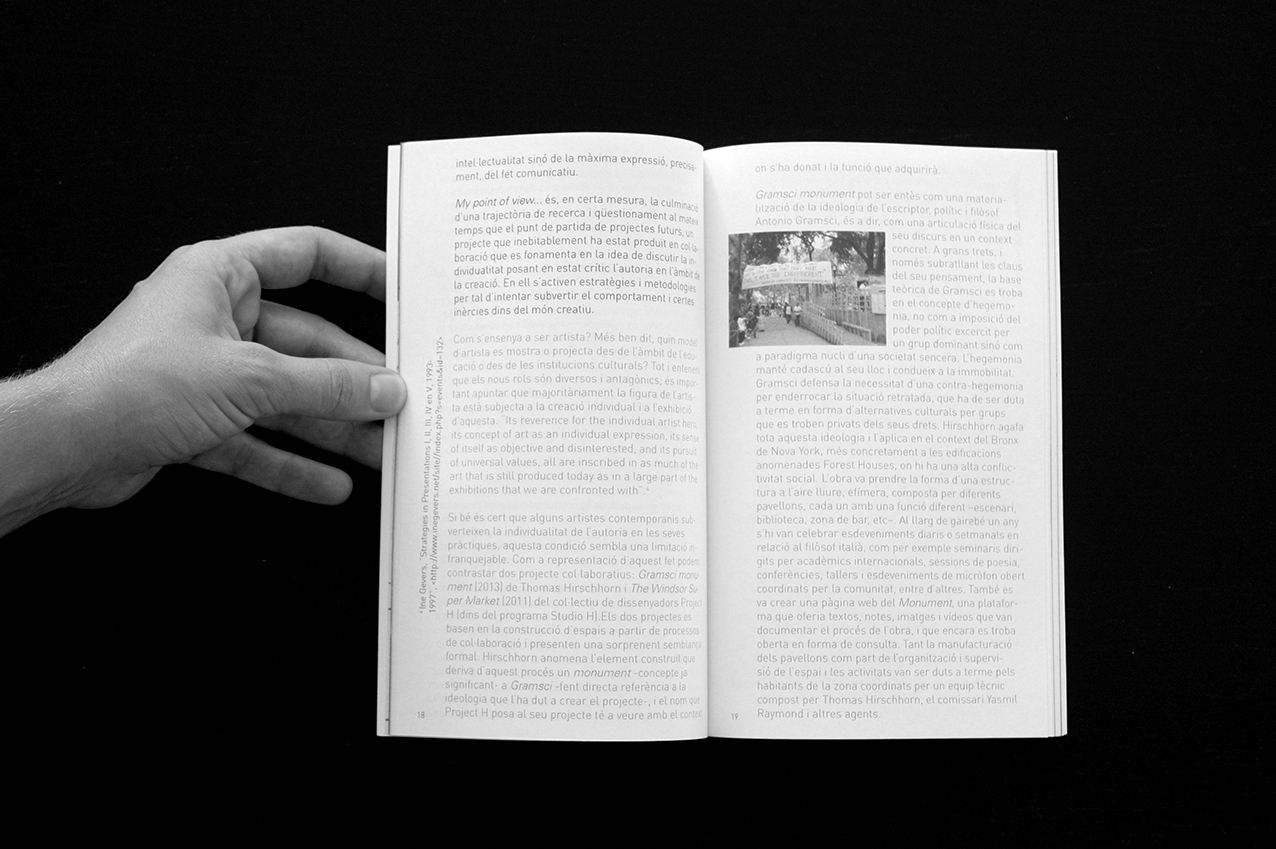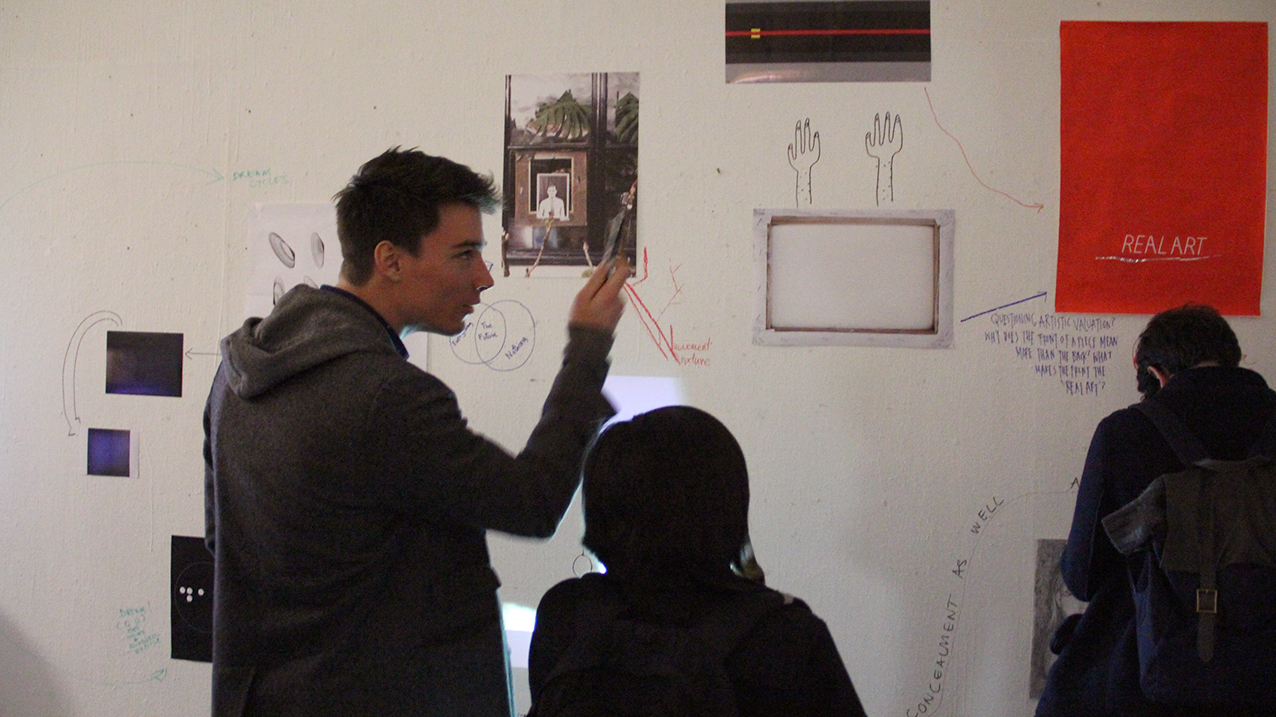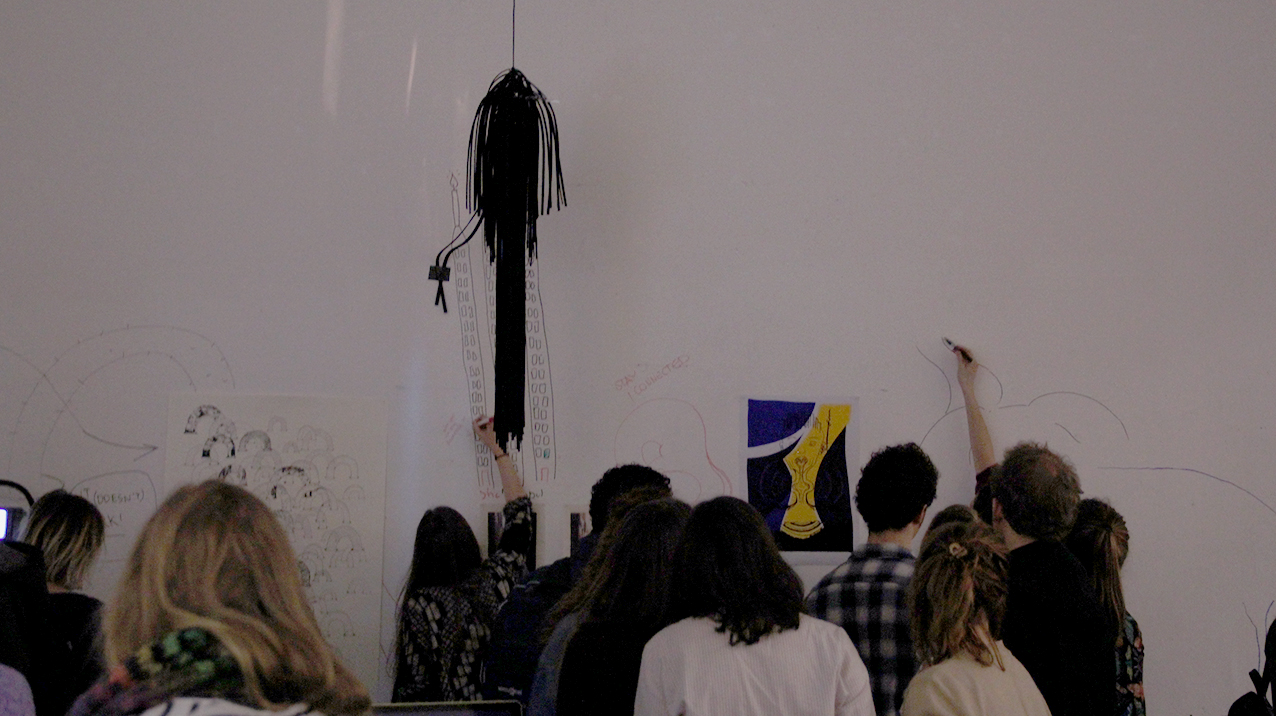My point of view on how to undermine authorship (through an imposition): De Verbinding analysis
(2015)




Research project that collects a processual, collective,
curatorial and editorial work; Rotterdam and Barcelona.
Printed edition april 2015: 66 pages, 148x210 mm, soft
cover, digital printing.
This is a research project that looks to cut across authorship and
authority of art producers. The project is developed by a
succession of interrelated actions and decisions. The aim is to undermine individual
authorship in art production, working through the idea of
collectivity in the production process.
During the first part of the project, named ‘De Verbinding’, and placed in Rotterdam, it is
proposed a metodology to force the contamination
and influence between producers during creative processes. A production chain is proposed: you have to produce from an artwork that you are receiving from another person.
When the project has to be shown in an exhibition room, the problems arise: in a meeting with all the participants, it is asked to find out together which way will be the best to show and communicate all the project. When the format of an event or a performative talk is proposed to replace the tipical format to exhibit artworks, the general reaction of mostly everyone is a total negation: they want to have the material artworks placed in the walls. And then, is where the confrontation and contradiction appears: the necessity of the individual object, the confrontation between the main idea and the “participants” ones and the delegation of this important choice to the person who had started the research (meaning the delegation of the authority of the project itself).
Understanding this situation as an unexpected and undermining shift of the project towards itself, I decided to place all the artworks in the walls of the exhibition room, and during the opening offer to the public to draw, paint, react with pens in the space
between the pieces. With this gesture it is possible to make another shift towards the idea of collective and community, but this time thanks and coming from the imprint of the active public. After the opening, all the artworks are
put down, and what it is kept in the room is all the traces
the public has left. White walls with the public’s intervention
on it.









